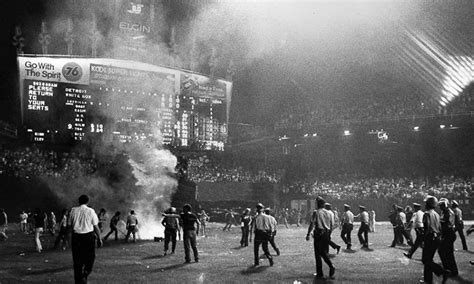
The Last Days of Disco (1998)
Director: Whit Stillman
Disco will never be over. It will always live in our minds and hearts. Something like this that was this big, and this important, and this great, will never die.
Whatever the revisionist rock music critics would have you believe: the Sex Pistols did not take over American youth-culture in late 70s. It just didn’t happen. For all of their fire and glory, American audiences were just too well-fed to embrace what John, Sid, Steve and Paul had to offer. The venom of the Pistol’s music and their musical revolution was lost on a country were Ronald Reagan and the moral majority was poised to win in an electoral surprise in 1980. Instead, the real youth-culture battle in the US in the late 70s revolved around the rise of disco music and the backlash against it. After rock’n’roll had already been hijacked by white mainstream culture, a powerful regressive constituency of classic rockers would resist any change from the dominance of straight, white rock music. Look no further than the holy trinity of rock repetition- Led Zeppelin, Fleetwood Mac and the Eagles- for proof, with all three bands still being played endlessly in 2021.
The backlash against disco went much deeper under the skin of America’s than many anti-disco crusaders would care to admit. The battle against disco music was a proxy war for a much larger cultural battle that was blooming on the horizon and an ugly, anti-intellectual political force was gaining momentum. Fueled by economic downturn, the late 70s was the beginning of the right-wing populism that would leave a permanent scar on the nation both culturally and politically. An neo-fascistic scar that has only gotten more extreme and identifiable in current times.
For all the film’s important subtext, The Last Days of Disco is a charming, romantic representation of the period, the last stages of the disco scene between 1979-1980, when dance music and liberal social values dominated the cultural consciousness of the country. Set among the young, affluent cultural elites graduating from America’s top Ivy League universities on the East Coast, the protagonists are attractive and well-dressed young adults who would soon assume their privileged places in the middle and upper echelons of society. There was much to celebrate and they are little aware of the political and economic unrest growing outside of their echo-chambers.
Director Whit Stillman creates the perfect Manhattan disco vibe for our scene makers, Alice Kinnon and Charlotte Pincers (Chloe Sevigny and Kate Beckinsale) who, after graduating from Hampshire College and landing jobs in publishing, begin to explore their exciting but superficial lives in New York City. Their nightly visits to an exclusive disco club are portrayed as a warm and open meeting ground where Alice and Charlotte philosophize about life and relationships and take advantage of the sexual encounters available all around them. The humorous banter between the characters fits perfectly with the infectious dance music scenes that are peppered throughout the entire film (this is a soundtrack worth owning). You can picture the scene; fantastic dance music with long lingering camera shots of the beautiful young women and their suitors as they laugh and cry their nights away.
All would seem perfect but for the rise of a flux-populist, anti-disco movement in the American heartland that begins to spill over into their world. Haunting the background of the film is a growing hate of the music, values and elitism of the disco scene. A backlash that will soon ruin the party. Outside of the cultural centers on the coast, the American middle-class was about to stage a cultural and political assault against the openness and liberalism exemplified by Studio 54 and disco music itself.
The Disco Demolition Night was a very real event staged on July 12, 1979 as a baseball promotion in Comiskey Park, Chicago Illinois. It was also the first shot in a new political culture war that still rages. Between games of a twin-night doubleheaders, in front of 50,000 baseball fans, Chicago Radio DJ Steve Dahl “blew-up” a massive crate of disco records on the baseball field. The crowd was delighted and roared their approval. After the explosion of records, thousands of rock music fans stormed the field and would only leave when riot-police forced them from the field. The stadium was so badly damaged that the second game was postponed and the event received world-wide attention. It was a watershed moment that either helped trigger or coincided with a massive sales drop of disco records between 1979 and 1980. The reason for this shift had as much to do with economics, race and sexuality, as it did with rock or disco music. After this moment, the disco format quickly receded into the cultural landscape of the nation.
For Alice and Charlotte, their favorite disco club was the target of a massive narcotics investigation which leads to a raid and the permanent pad-locking of the doors. A symbolic loss and a change that eventually made its way through all the clubs in New York and Manhattan. For our two young ladies and their friends, the closing of the club was the death of that initial burst of freedom, privilege and beginning adulthood. As for the future of disco, the film pledges that there will always be those that find their way to good music and good times. Thus dance music began the move back into the American underground, where the sound was picked up by DJ’s in Chicago, New York and Detroit, and eventually reborn as House and Techno music, from where it quickly evolved and morphed in directions only hinted at in the mainstream. Toward the end of the film, a friend of Alice and Charlotte, Josh Neff, assures us with this optimistic prediction: “Those who didn’t understand will never understand. Disco was much more… Disco was too great and too much fun to be gone forever”.
by Shawn Ciavattone

What do you make of the fact that our Thatcher was elected before Reagan?
In the UK, Punk played an important role in Thatcher’s neo-conservative backlash. Of course, differently but there were similarities. There’s a great book called England’s Dreaming that shows how the Pistol’s rise corresponded to Thatcherism. Worth reading.
I enjoyed reading your multi-layered article. The film’s review is the starting point to understand how music & politics had been changing over the years…
The punk movement was an amazing explosion of creativity & liberation, I appreciate the bands that came from that era (Sex Pistols, The Clash, The Stooges, etc). Post-punk was also an specific period that came slightly afterwards, most people and music critics like to place both periods together, but they have huge differences. Post-punk bands were much more oriented towards introspective lyrics & musical experimentation. I found my place listening to post-punk bands like Joy Division, The Cure (1st period) , Wire, Siouxsie & The Banshees, PIL, etc.
In my opinion, Disco and New Wave were also crucial for music’s history, I see that “The Disco Demolition Night” was fueled by a lot of traditional rock lovers/ white mainstream “bad boys”. Disco subculture dominated the charts in that period, stealing the spotlight of those “rock heroes”.
Anyway, I need to check out that film. I’m sure it’ll give me a wider dimension of Disco’s importance in music’s history.
Thank you Octavio. It’s a good film. I was most interested in the political subtext of the film as I think it relates to many forces we see active today. Those hidden subtext. But it’s enjoyable enough film. There is also a great soundtrack full of the music that fueled those nights. Voi
I’m so in the mood to watch this film now.. Chloe Sevigny ❤️❤️❤️
Great film with a fun soundtrack. Enjoy.
Shawn,
I’m not a disco fan (it’s not my taste) or a fan of punk of the snotty Sex Pistols type. (I am a fan of The Stooges, Television, Wire, The Clash, however, I feel these bands encompassed a wider range and spectrum than most “punk” bands.) Of course, I’m also not a fan of Eagles, Fleetwood Mac, or the macho, ridiculous stadium rock of the 1970s.
You’ve hit the nail on the head about how the rise of Reagan and the right wing in the late 1970s paved the way for the destruction of American culture throughout the 1980s. (Even though I’ve never been a disco fan, I agree with you that the predominantly white rock fans of that decade lashing out at disco was destructive for that era since the disco subculture was more multiracial and was more inclusive of the LBGTQ+ community.)
I hear you. The Post-punk of Wire, PIL, Magazine…that was always more my thing. The music was broader and more interesting. But still had that the snarl of punk. Love it. Although I always had a fondness for the Damned. And when it comes to disco, I’ve just always loved good dance music. It’s given us so many great sounds. Try Giorgio Moroder, a recommendation from Saliha. He produced Donna Summer’s I Feel Love. His solo work is not to me missed. Oh…I see a great connection. PIL’s Death Disco 🔪🕺
The Bee Hees destroyed Disco.
I had never heard of the Disco demolition night before. Incredible! Such an interesting article!
Disco Demo Night was an eye opening event. It’s showed the cultural atmosphere in the US in 1979. By November everyone was shocked by the election of Ronald Reagan but looking backwards we can see it growing.